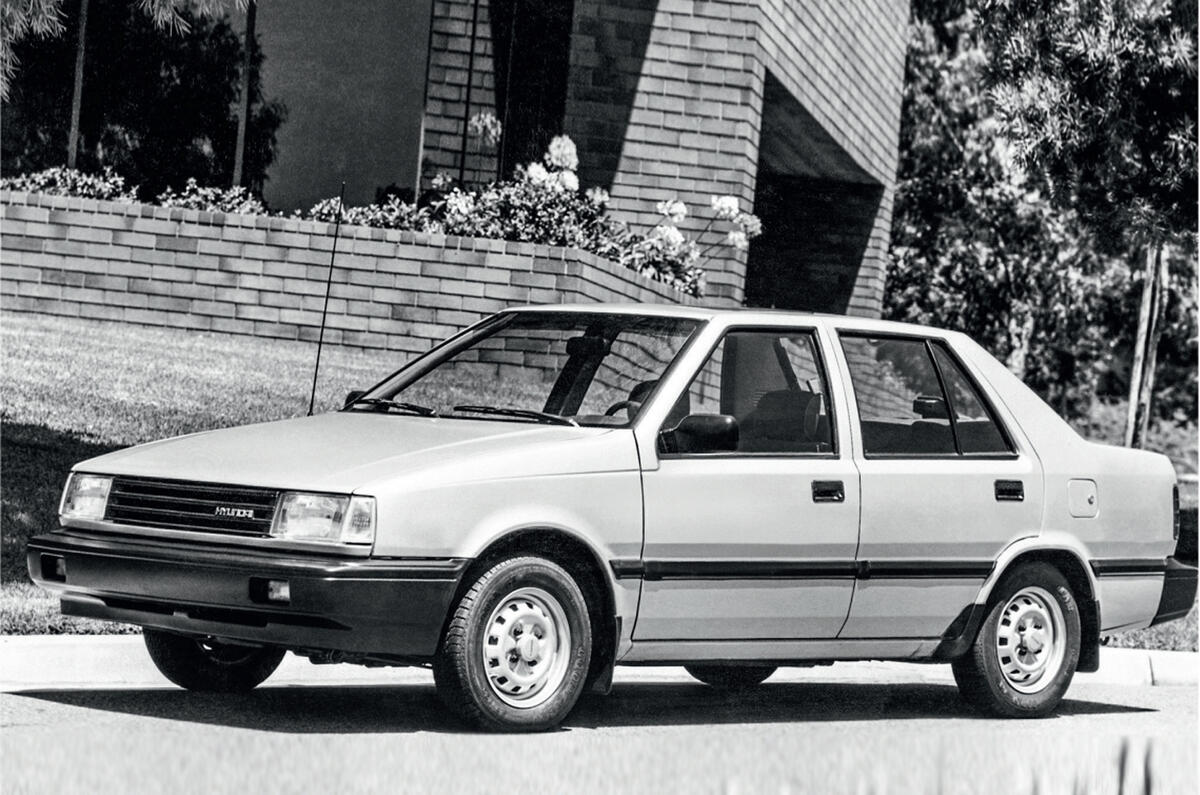Hyundai’s first UK car market foray came with the rear-wheel-drive Pony, which went on sale in 1982 for £3075.
The South Korean manufacturer soon filled a niche at the lost-cost end of market that was being vacated by the Japanese car companies, which were finding that a rise in the value of the yen was forcing them to increase the prices of their cars.
The second Pony to reach these shores was a much-changed machine compared with the one masterminded by former Austin-Morris boss Sir George Turnbull. Like its predecessor, it still used powertrains sourced from Mitsubishi, but it had an up-to-date front-wheel drive platform, Giugiaro styling and a more sophisticated interior.
A wider choice of variants was offered, including a four-door saloon that Autocar tested in 1.3 GL trim in late 1986. At £5149, it undercut similar-sized 1.3-litre rivals such as the Ford Orion and Vauxhall Belmont by around £1500.
The 1296cc engine produced 66bhp at 5500rpm and 72lb ft at 3500rpm. Our testers described these figures as “average outputs for the capacity, which endow the 900kg Pony with adequate, rather than sparkling, performance. A glance at the rivals’ figures shows that a maximum speed of 95.6mph is about par for the budget 1.3-litre class”.
Of the performance, our testers said: “From a standstill to 60mph takes the Pony 13.3sec, achieved with considerable tramping from the front wheels and gritting of teeth from the driver, for the engine becomes very noisy and quite harsh when revved hard, which for many drivers would discourage brisk motoring. Nevertheless, cruising is reasonably relaxed at the legal limit.”
While outright flexibility wasn’t bad – 30-50mph in fourth gear took 11.8sec, quite competitive by class standards – in practice you had to use lots of revs as well as lots of throttle to make real progress.
“Inevitably, fuel economy suffers,” we said. “The test car achieved an overall 28.8mpg in our hands, which is below par. The touring fuel consumption of 37.1mpg, too, is unexceptional, giving a modest range of 326 miles from the 40-litre (8.8-gallon) tank.
“The gearchange is not as good as its Japanese heritage might suggest. Once the gearbox oil has warmed up, the change is easy enough, but it remains a little notchy and smooth progress isn’t helped by a clutch with an abrupt, over-centre action.”
Our testers deemed the Pony a long way behind European rivals when it came to dynamic prowess: “This is not a car designed to attract the enthusiastic driver, so the chosen handling balance is an understandable decision. It has the merit of being completely failsafe, with understeer building up rapidly as the modest grip limits approached. Lift off halfway round a bend and the Pony will do little except scrub off speed and allow the driver to tighten the line with the steering if necessary.





Join the debate
Add your comment
"the well-built Hyundai makes a lot of sense"
Was it really that bad?
Must've been before the